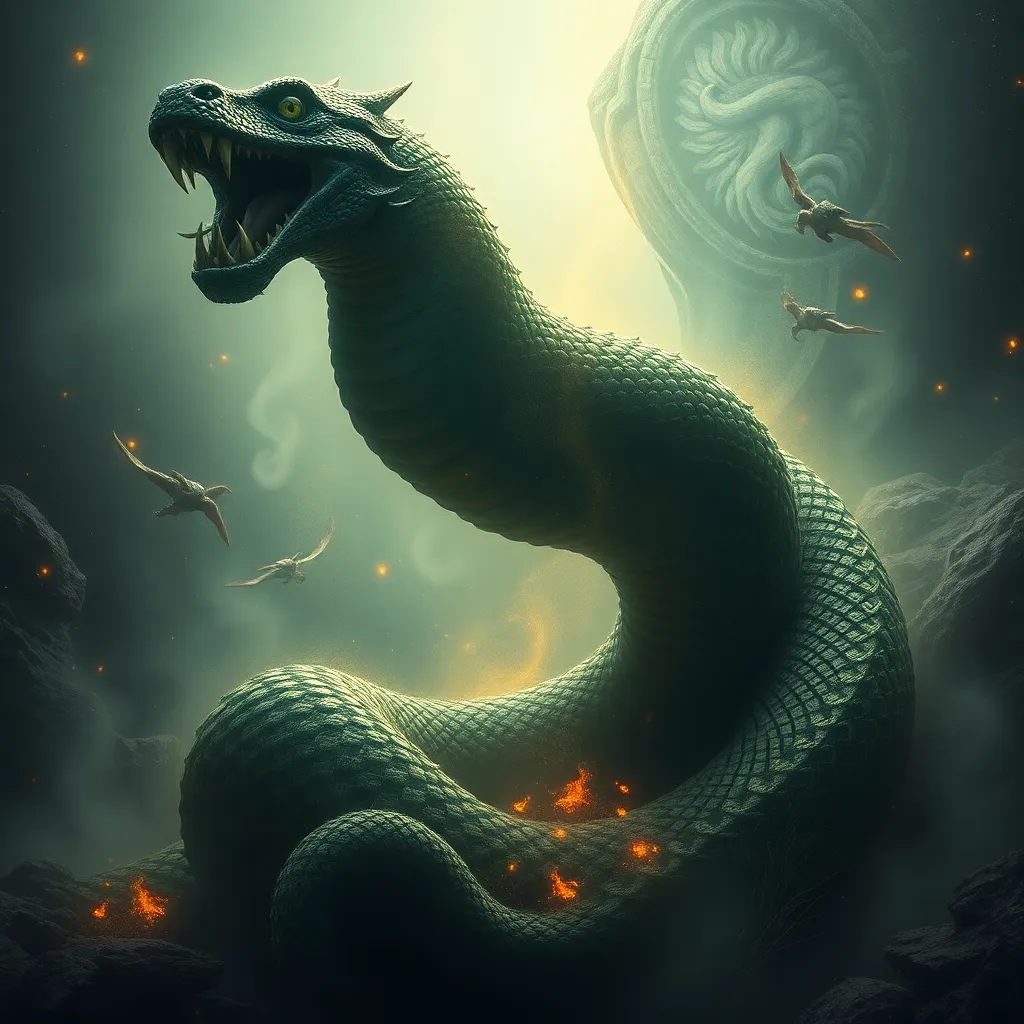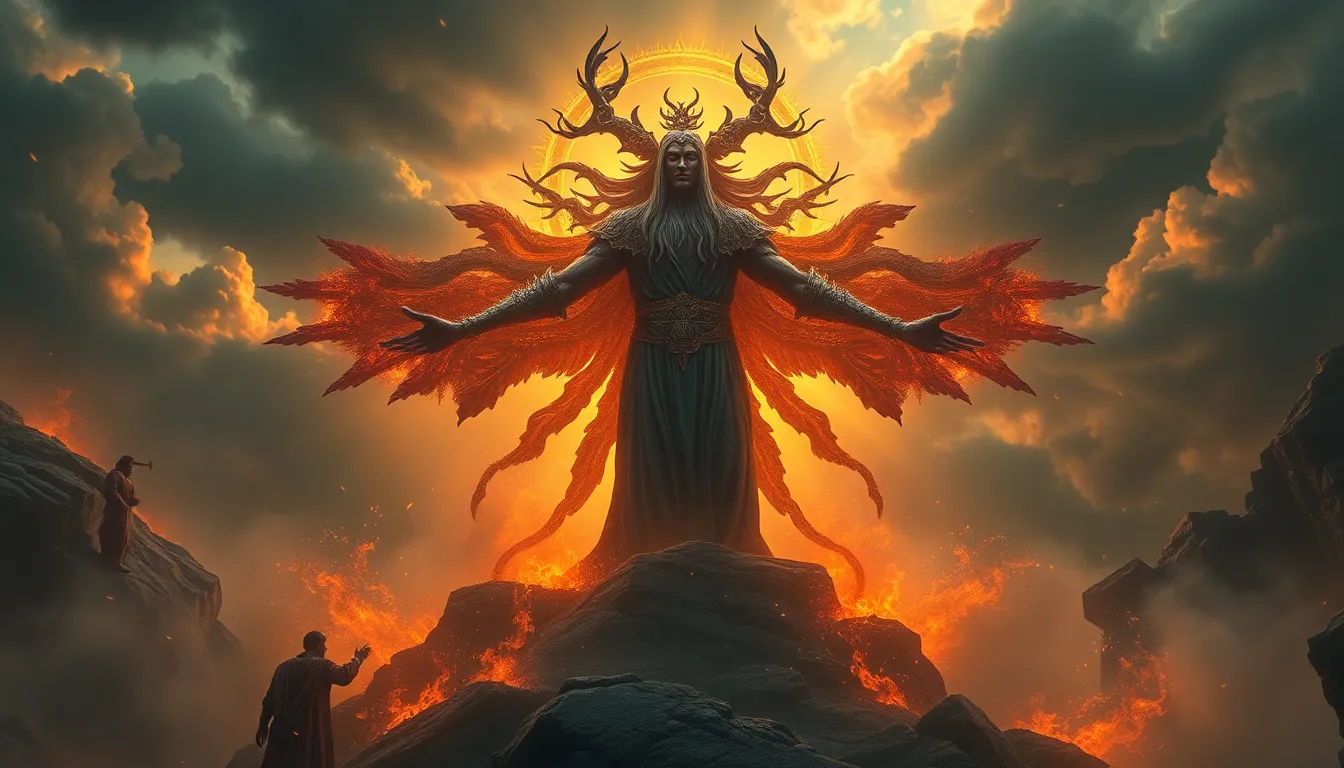The Serpent’s Legacy: Jörmungandr’s Influence on Contemporary Environmentalism
I. Introduction
In Norse mythology, Jörmungandr, also known as the World Serpent, is a colossal sea serpent that encircles the Earth, symbolizing the interconnectedness of all things. As one of the most intriguing figures in myth, Jörmungandr represents not only danger and chaos but also balance and unity within the natural world. This article explores the connection between Jörmungandr and contemporary environmental themes, highlighting how ancient mythology provides valuable insights into modern ecological challenges.
The purpose of this article is to delve into Jörmungandr’s mythological background, its symbolism, and its relevance to current environmental movements. By examining how Jörmungandr embodies the principles of interconnectedness and cyclical existence, we can better understand the lessons that mythology offers for contemporary environmentalism.
II. Jörmungandr: The World Serpent
Jörmungandr is one of the three children of Loki, the trickster god, and the giantess Angerboda. According to myth, Odin cast Jörmungandr into the ocean, where he grew so large that he encircled the Earth, grasping his own tail. This imagery serves as a powerful metaphor for the cyclical nature of existence and the interdependencies within ecosystems.
A. Mythological background of Jörmungandr
In Norse cosmology, Jörmungandr is destined to play a crucial role in Ragnarök, the end of the world, where he battles Thor, the god of thunder. This epic confrontation symbolizes the struggle between order and chaos, reflecting the delicate balance of nature. The World Serpent’s mythological narrative is rich with themes of destruction and renewal, paralleling today’s environmental crises.
B. Symbolism of the serpent in various cultures
Serpents are potent symbols across multiple cultures, often representing transformation, wisdom, and duality. For example:
- In ancient Egypt, the Uraeus symbolized sovereignty and divine authority.
- In Hindu mythology, the serpent Naga represents water and fertility.
- In Mesoamerican cultures, the feathered serpent Quetzalcoatl embodies creation and the cycle of life.
These diverse interpretations highlight the shared human understanding of the serpent as a representation of life’s complexities, echoing Jörmungandr’s role in Norse mythology.
C. Jörmungandr’s role in the Norse cosmos and its environmental implications
As Jörmungandr encircles the Earth, he embodies the concept of a closed system, reflecting how ecosystems are interconnected. The environmental implications of this symbolism are profound, emphasizing the importance of maintaining balance within nature. The destruction of one element can have cascading effects on the entire system, much like the cyclical nature depicted in Jörmungandr’s myth.
III. The Concept of Interconnectedness
Jörmungandr serves as a reminder of the interconnectedness of life on Earth. He is not just a creature of chaos, but also a symbol of the unity of land, sea, and sky.
A. Jörmungandr’s embodiment of the Earth and ocean
The serpent’s presence in the ocean signifies the importance of water as a life-giving force. Water is essential for all living beings, and Jörmungandr’s encirclement of the Earth underscores the need to protect our oceans and freshwater sources.
B. How interconnectedness is reflected in contemporary environmentalism
Modern environmentalism focuses on the intricate web of life, emphasizing that all species are dependent on one another. For instance:
- The loss of a single species can disrupt entire ecosystems.
- Pollution in one area can affect water quality far downstream.
- Climate change impacts biodiversity globally.
These truths echo the lessons embedded in the myth of Jörmungandr, reminding us that our actions have far-reaching consequences.
C. Case studies of ecosystems and biodiversity inspired by mythological narratives
Various ecological projects draw inspiration from ancient stories. For example:
- The “Green Belt Movement” in Kenya, inspired by communal stewardship of land, reflects the interconnectedness emphasized in many myths.
- Restoration projects for the Amazon rainforest highlight the importance of biodiversity, resonating with the cyclical themes present in Jörmungandr’s narrative.
IV. Modern Interpretations of Jörmungandr
Jörmungandr’s imagery and themes have permeated literature and art, influencing modern interpretations of nature and environmentalism.
A. Jörmungandr as a symbol in literature and art
Contemporary artists and writers often use Jörmungandr to symbolize the struggle between humanity and nature. Works that include serpentine themes frequently explore environmental degradation and the fight for sustainability.
B. Influence on environmental movements and activism
Environmental activists draw parallels between Jörmungandr and the current ecological crises, using the serpent as a rallying symbol. The idea that we are all part of a larger system resonates deeply within movements advocating for ecological balance.
C. The role of storytelling in shaping environmental consciousness
Storytelling is a powerful tool for environmentalism. By weaving narratives around figures like Jörmungandr, activists can evoke emotional responses that inspire action and promote awareness of ecological issues.
V. The Threat of Ecological Ragnarök
Just as Jörmungandr is intertwined with the concept of Ragnarök, contemporary society faces its own apocalyptic threats in the form of climate change and environmental degradation.
A. Parallels between Norse apocalyptic myths and current environmental crises
The catastrophic events of Ragnarök mirror the urgency of today’s ecological crises. As the world faces rising sea levels, extreme weather, and biodiversity loss, we are reminded of the fragility of our existence.
B. Examination of climate change, pollution, and extinction events
Current environmental challenges can be likened to the chaos brought forth during Ragnarök:
- Climate change threatens ecosystems and human livelihoods.
- Pollution poisons water sources, affecting both wildlife and human health.
- Extinction events disrupt ecological balance, much like the battles in Norse mythology.
C. How Jörmungandr represents the cyclical nature of destruction and rebirth
Jörmungandr’s narrative teaches that destruction can lead to renewal. As we confront ecological challenges, the myth serves as a reminder that rebirth is possible through restoration and regeneration efforts.
VI. Global Perspectives on Serpents and Nature
Examining serpent symbolism in various cultures reveals a universal message of respect and stewardship for nature.
A. Comparative analysis of serpent symbolism in other cultures
Serpents appear in many cultures as symbols of transformation and healing. For example:
- In Chinese culture, the dragon symbolizes strength and is often associated with water.
- In African traditions, the serpent is often seen as a protector of the earth.
B. Lessons from global mythology for contemporary environmental practices
Global myths emphasize the need for harmony with nature. They teach us that sustainability requires respect for all living beings, echoing the interconnectedness represented by Jörmungandr.
C. The universal message of stewardship and respect for nature
Regardless of culture, the message is clear: we must act as stewards of the Earth, recognizing our role within the larger ecosystem and the importance of preserving it for future generations.
VII. Case Studies: Modern Environmental Icons
Many contemporary figures and organizations embody the spirit of Jörmungandr in their efforts toward sustainability.
A. Profiles of influential figures and organizations inspired by Jörmungandr
Environmental leaders often draw upon mythological themes to inspire their work. Notable examples include:
- Greta Thunberg, whose activism invokes the urgency of ecological preservation.
- The Sierra Club, which emphasizes the interconnectedness of nature in its conservation efforts.
B. Initiatives that reflect the serpent’s legacy in promoting sustainability
Initiatives such as community-supported agriculture (CSA) and rewilding projects are modern manifestations of Jörmungandr’s legacy. These efforts promote biodiversity and sustainable practices that mirror the


